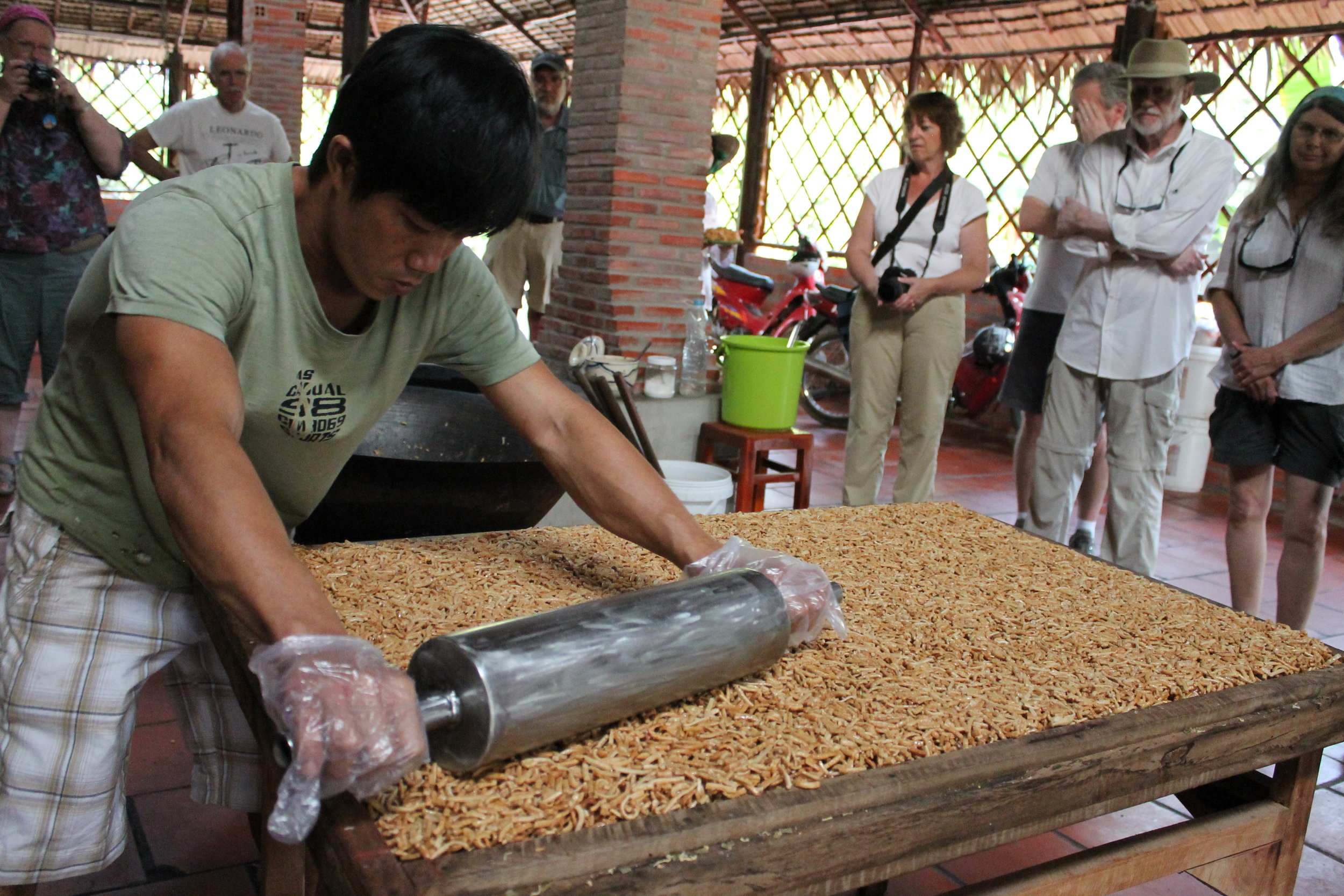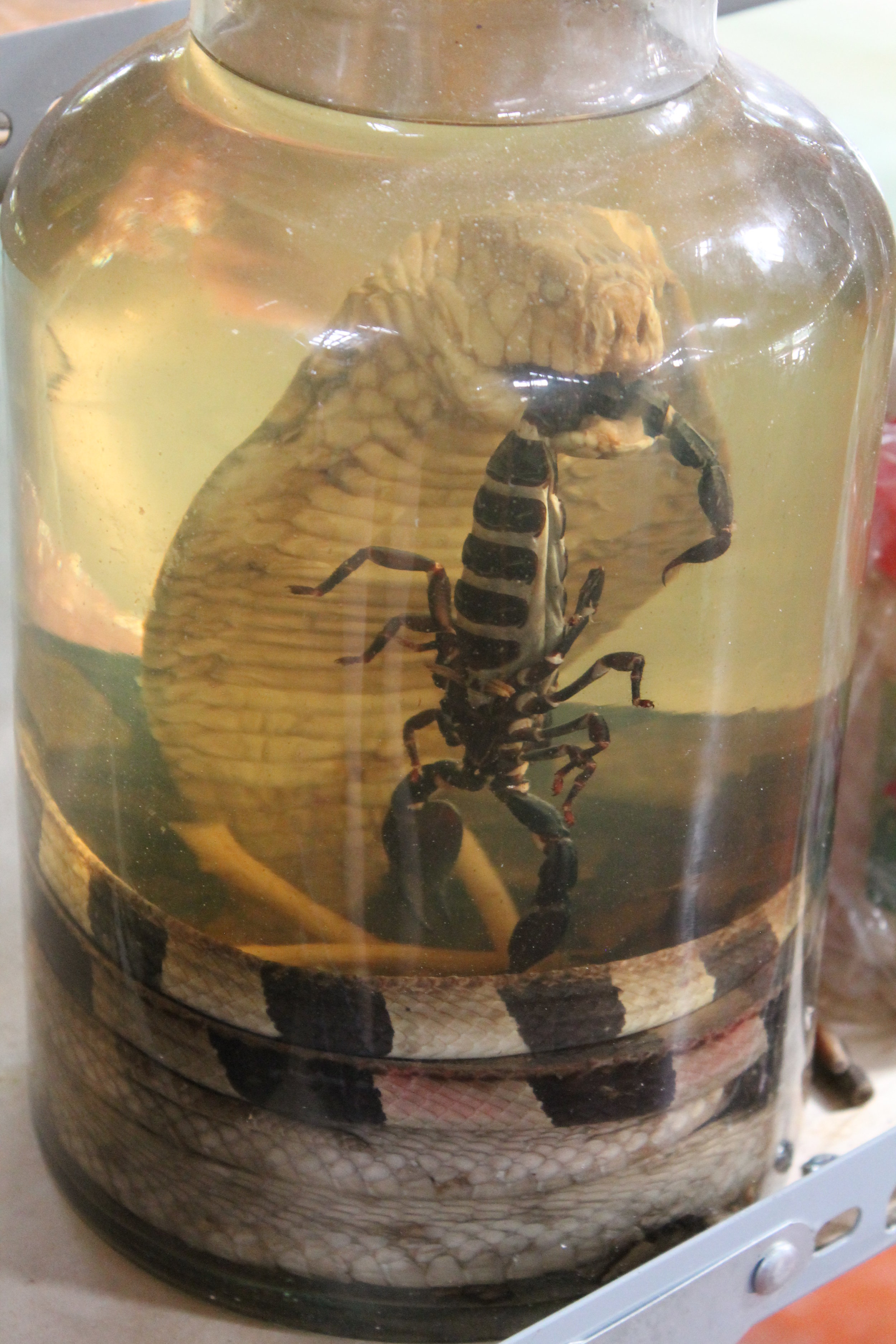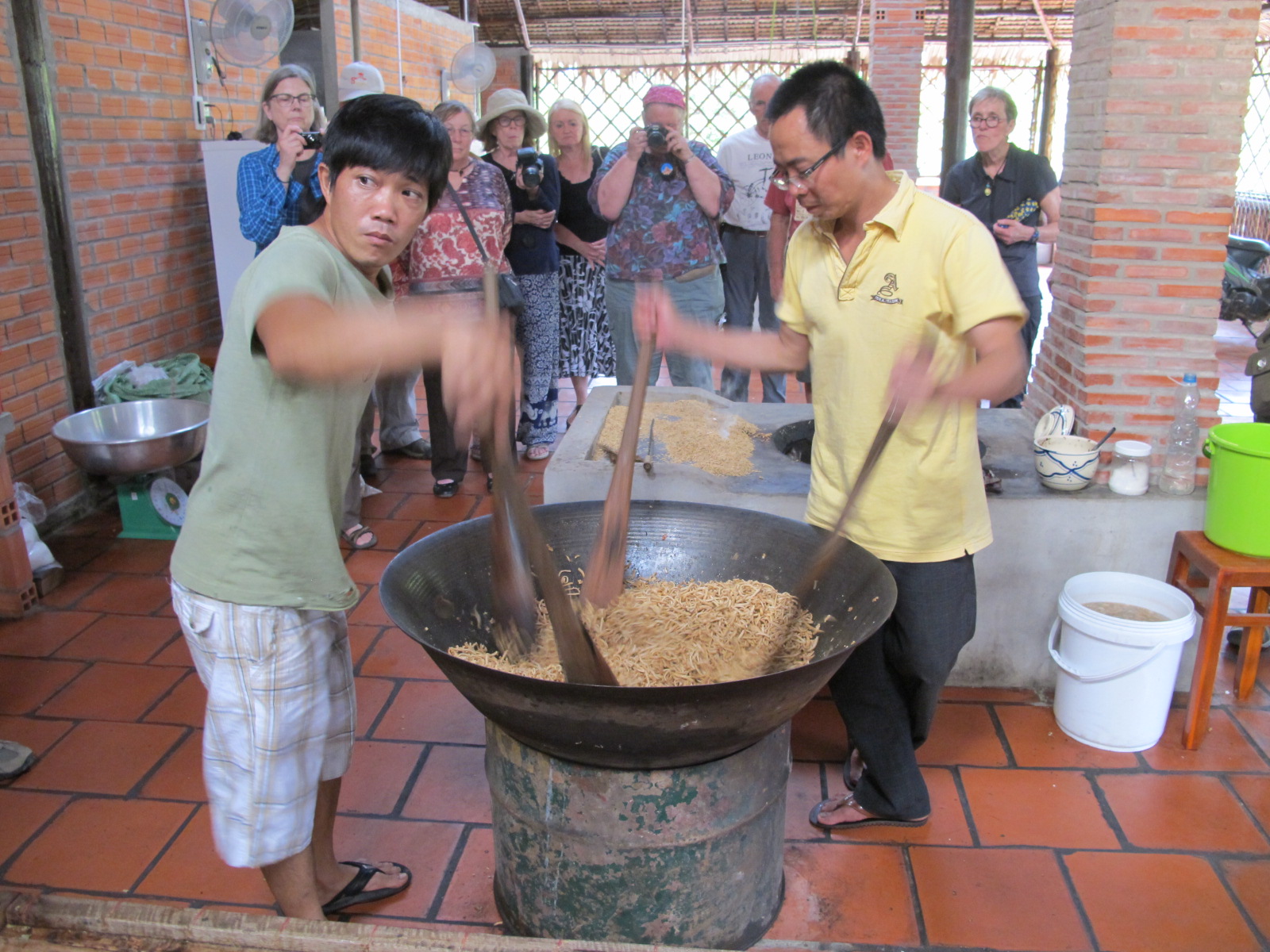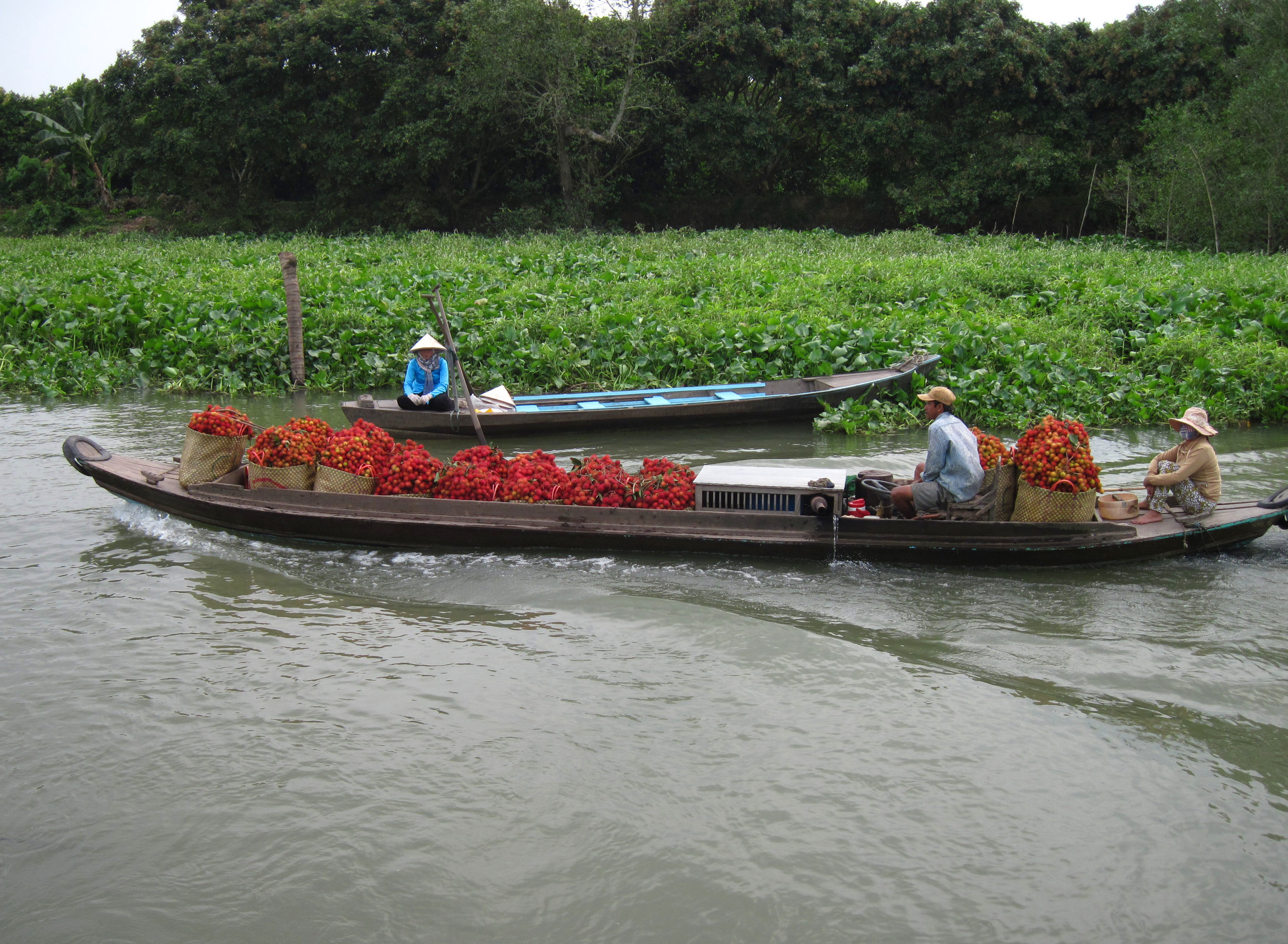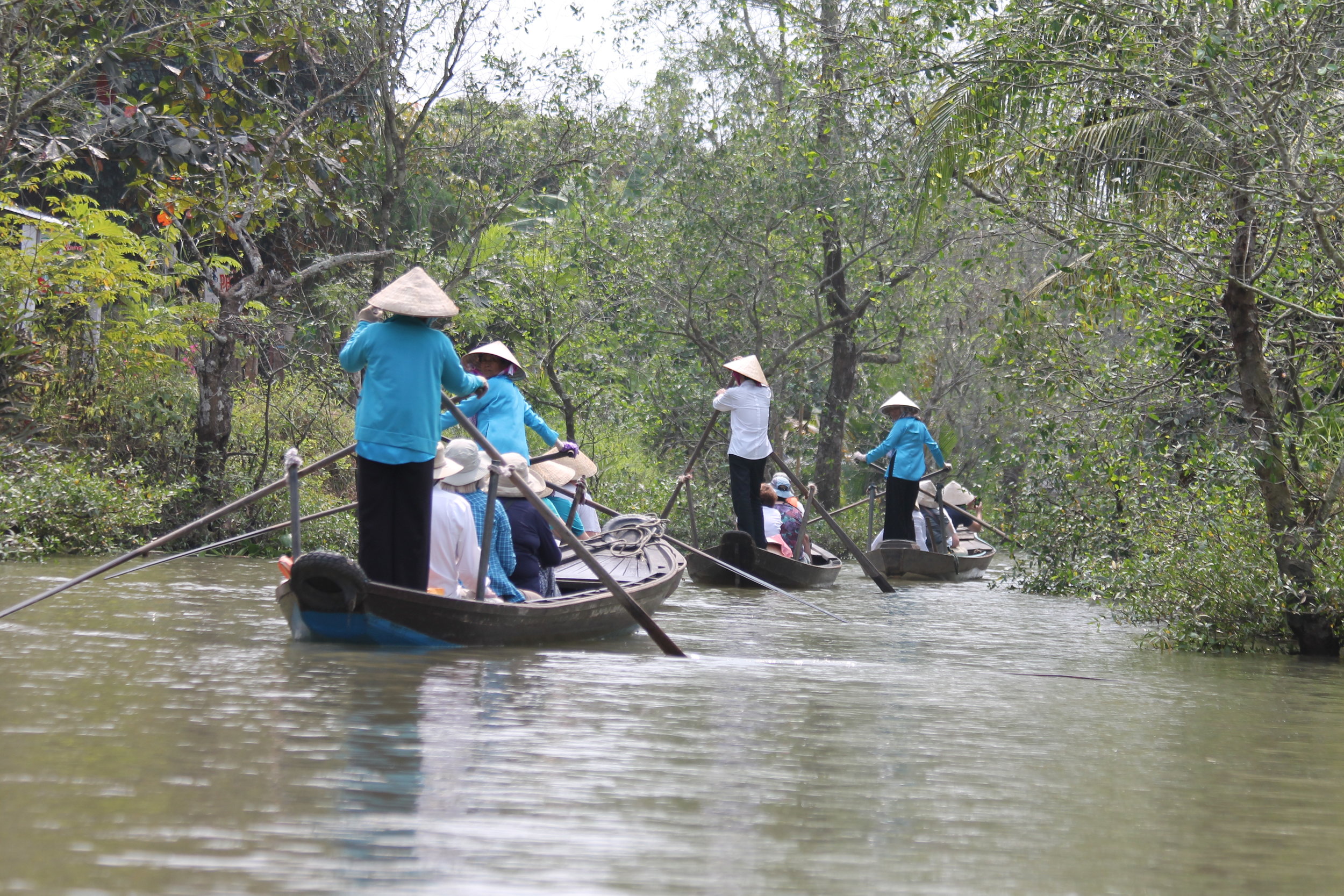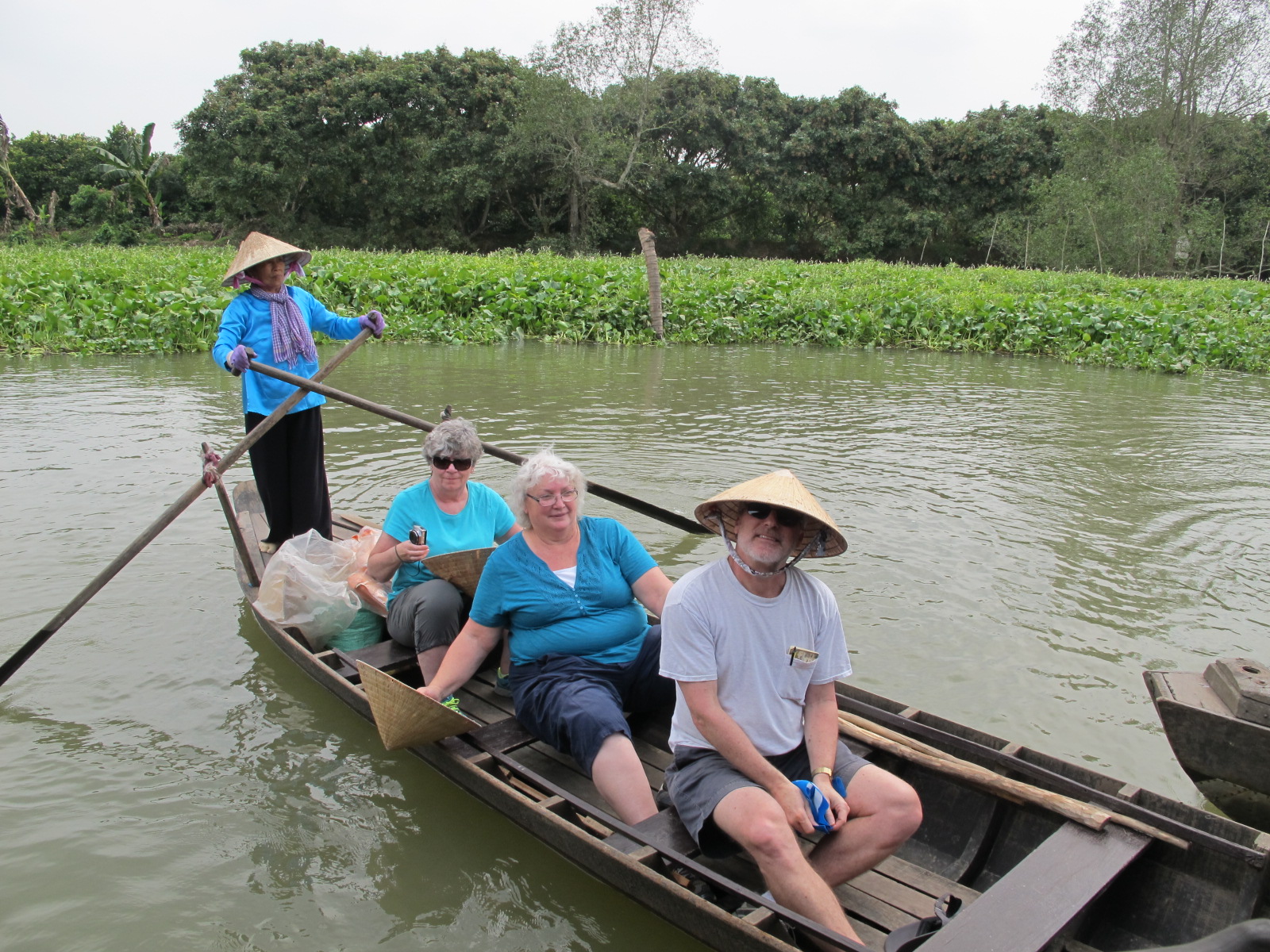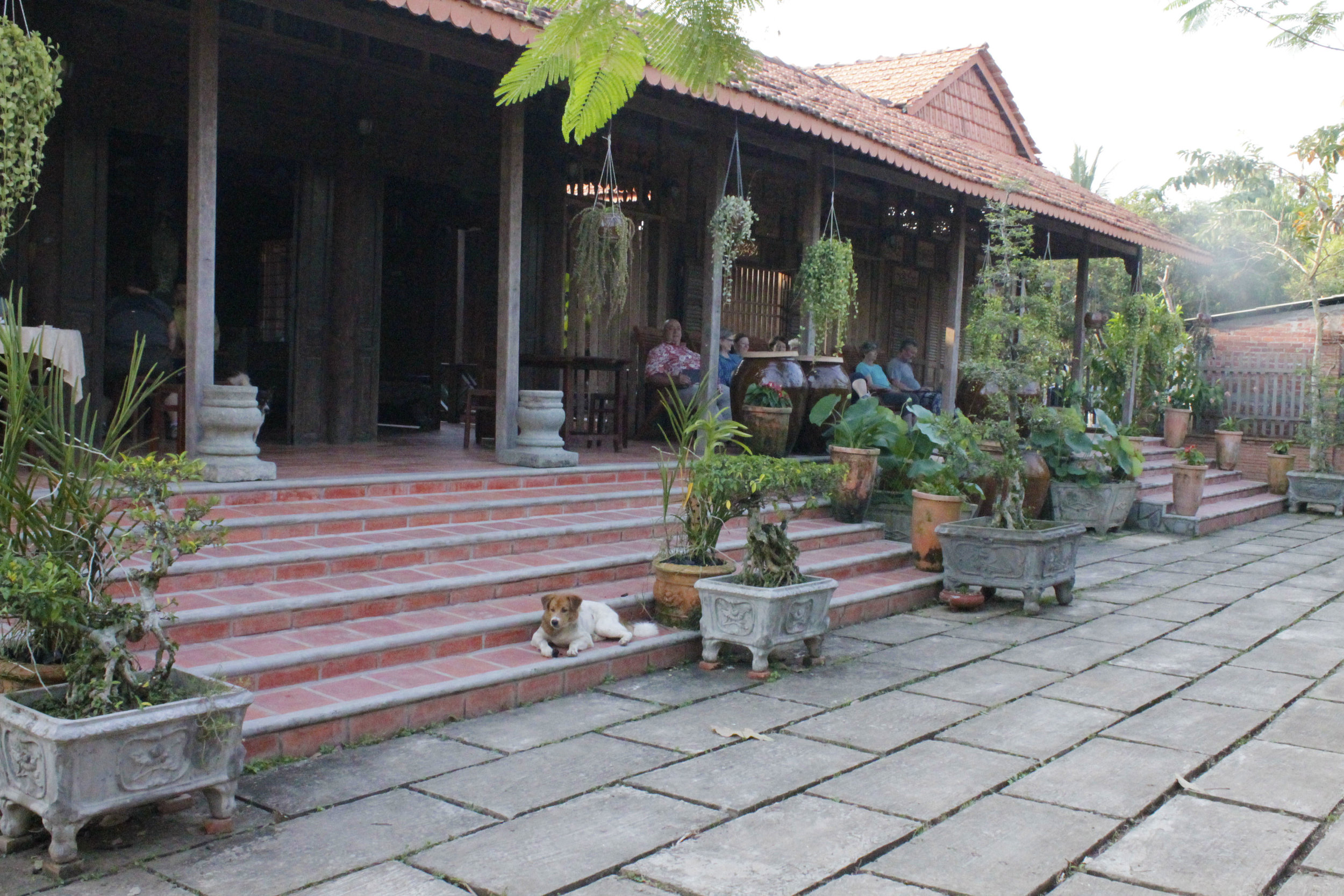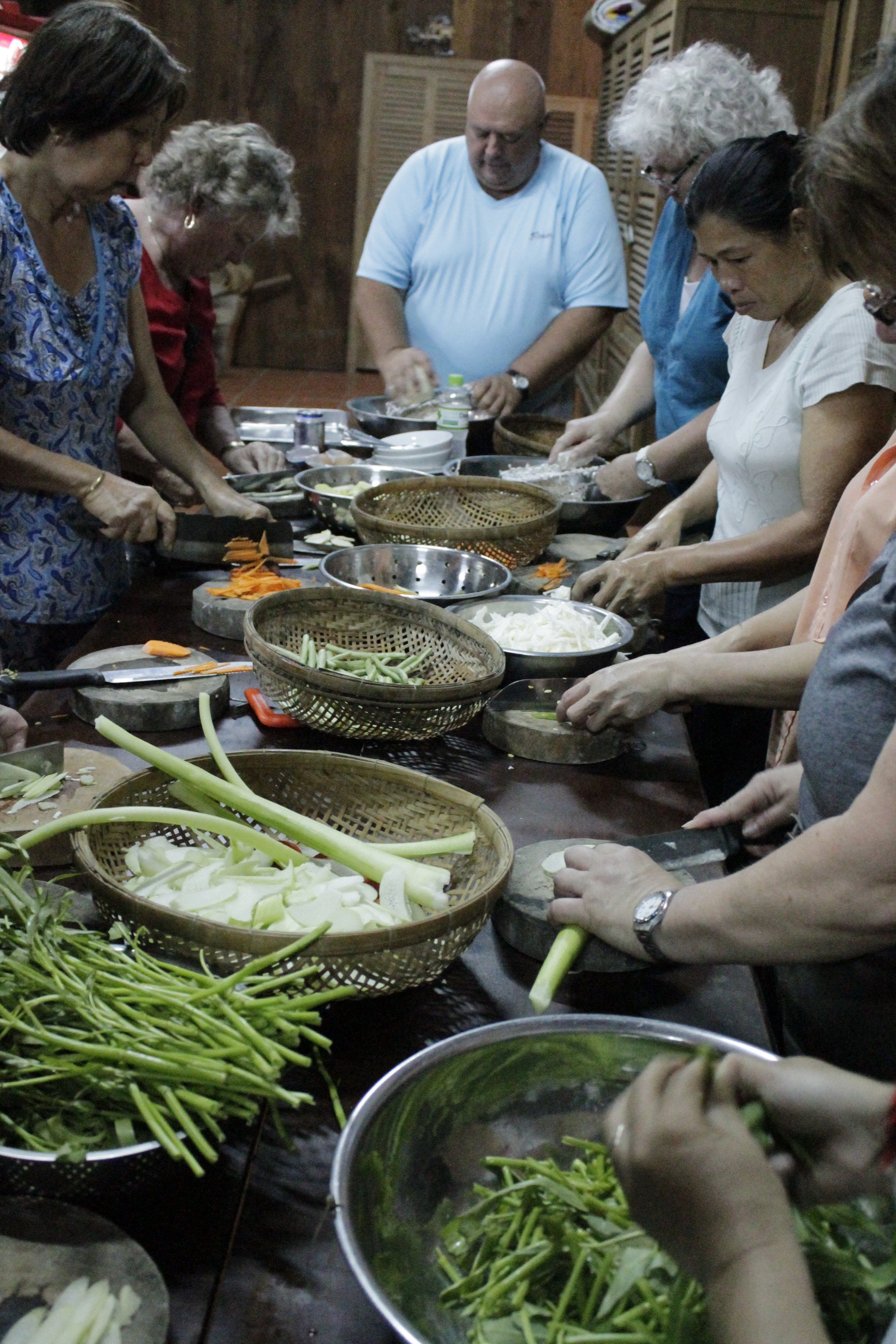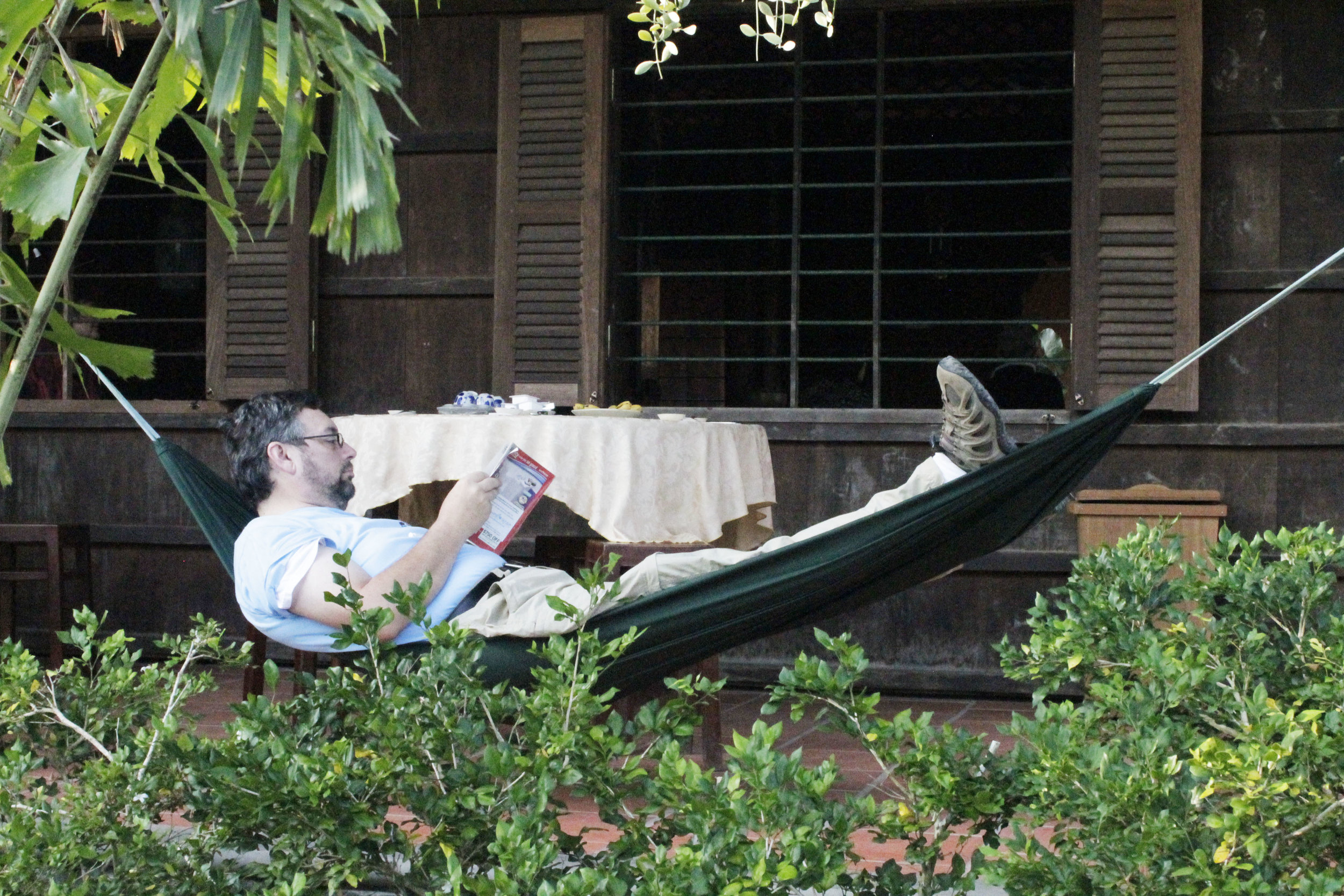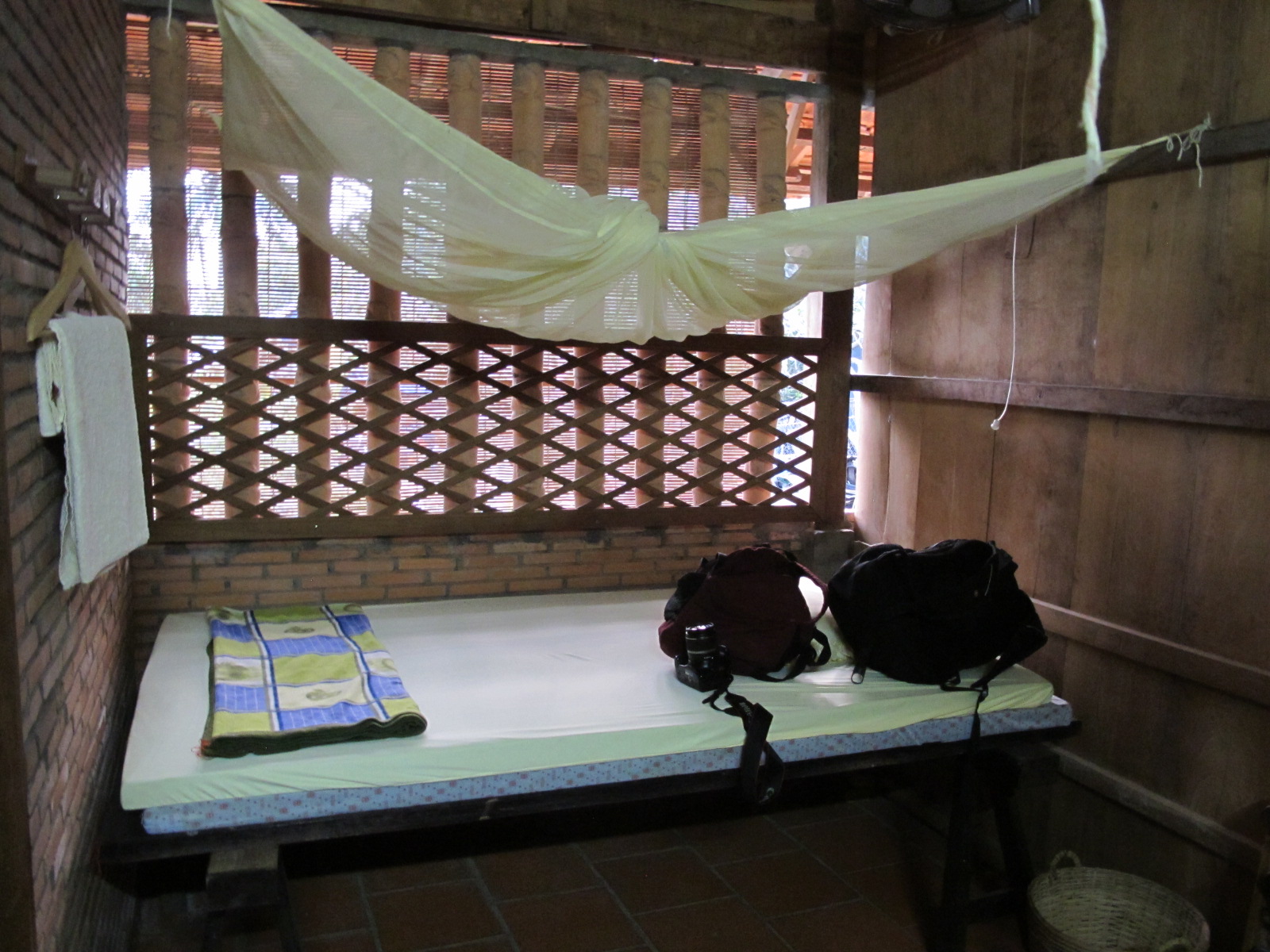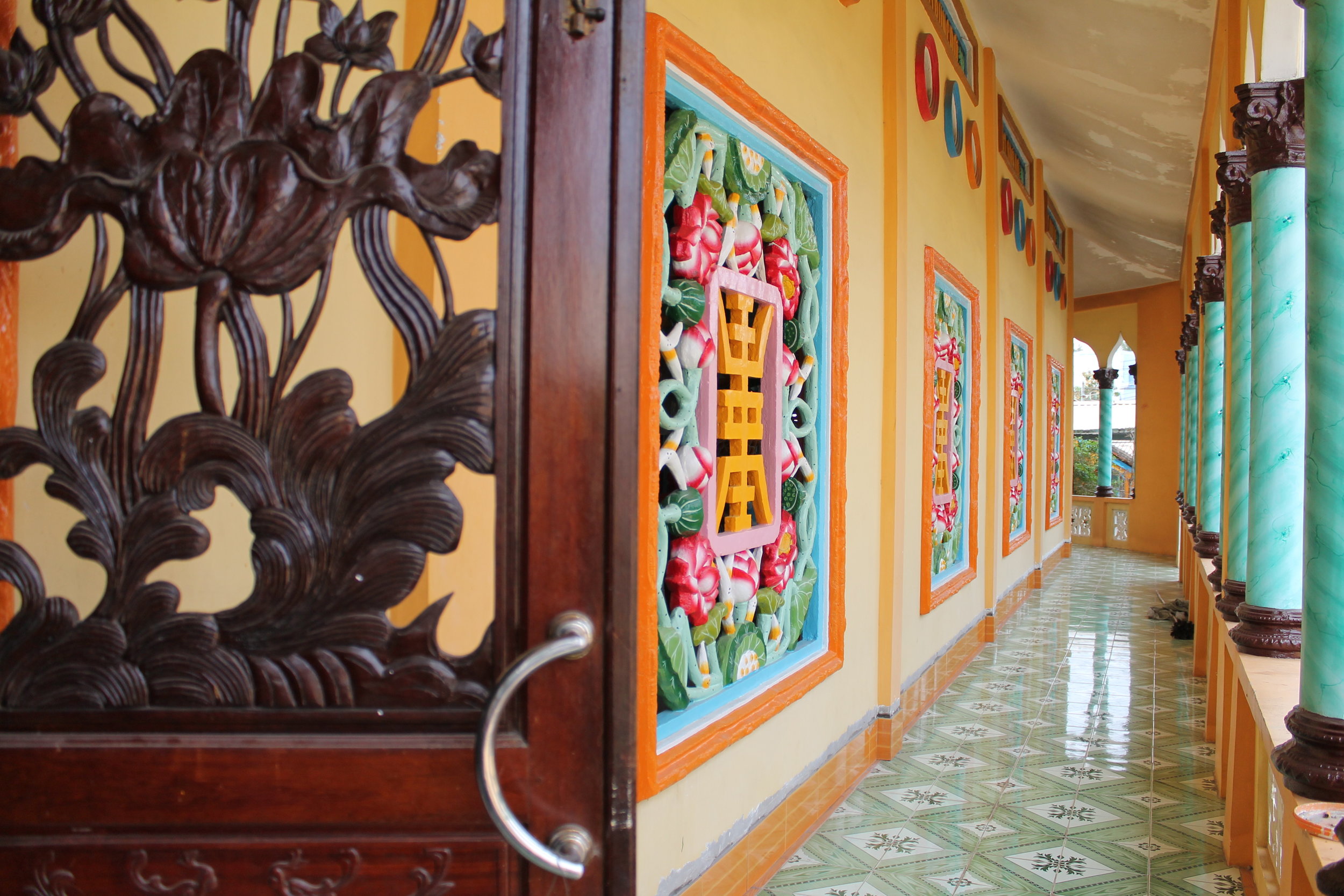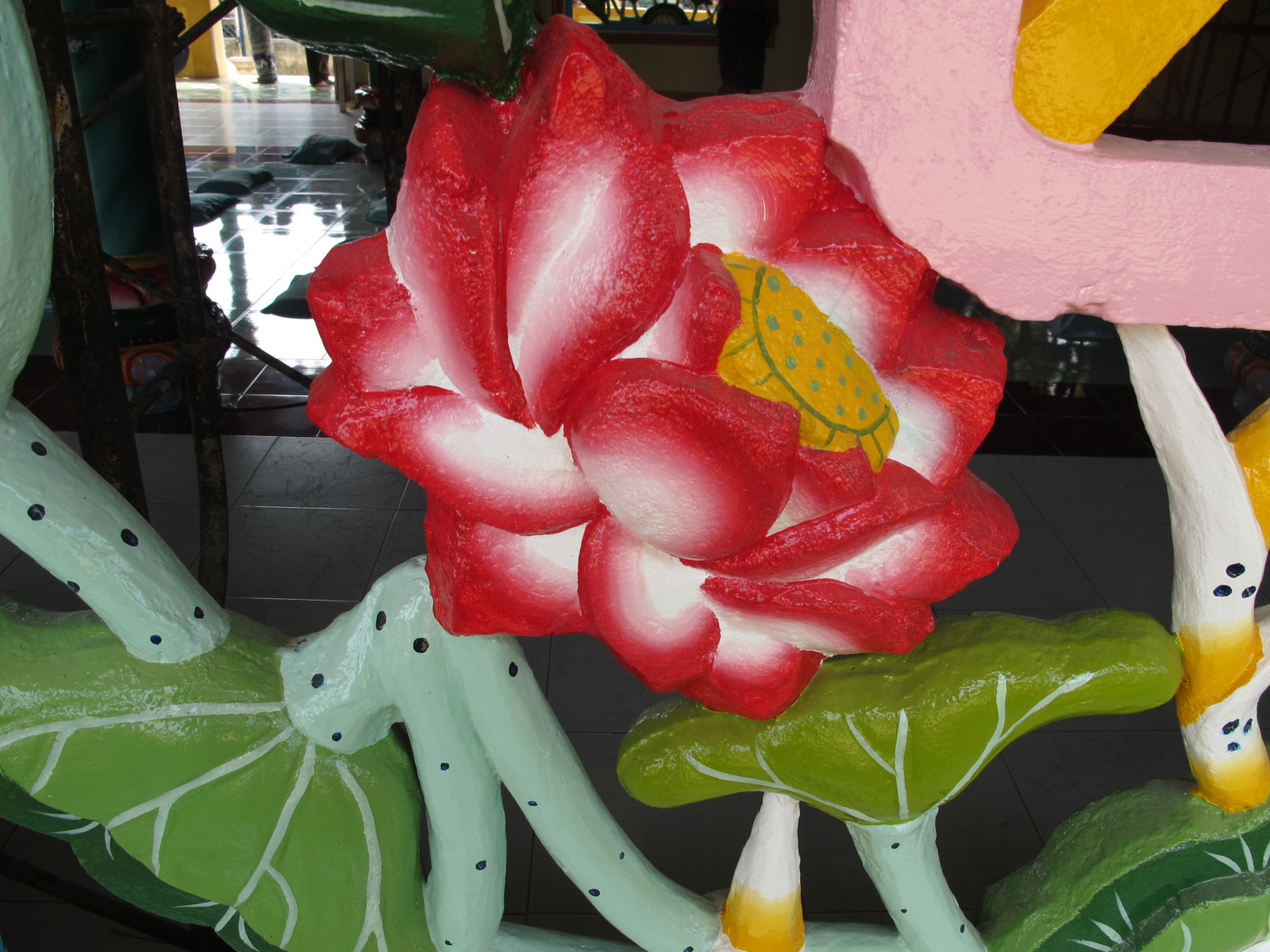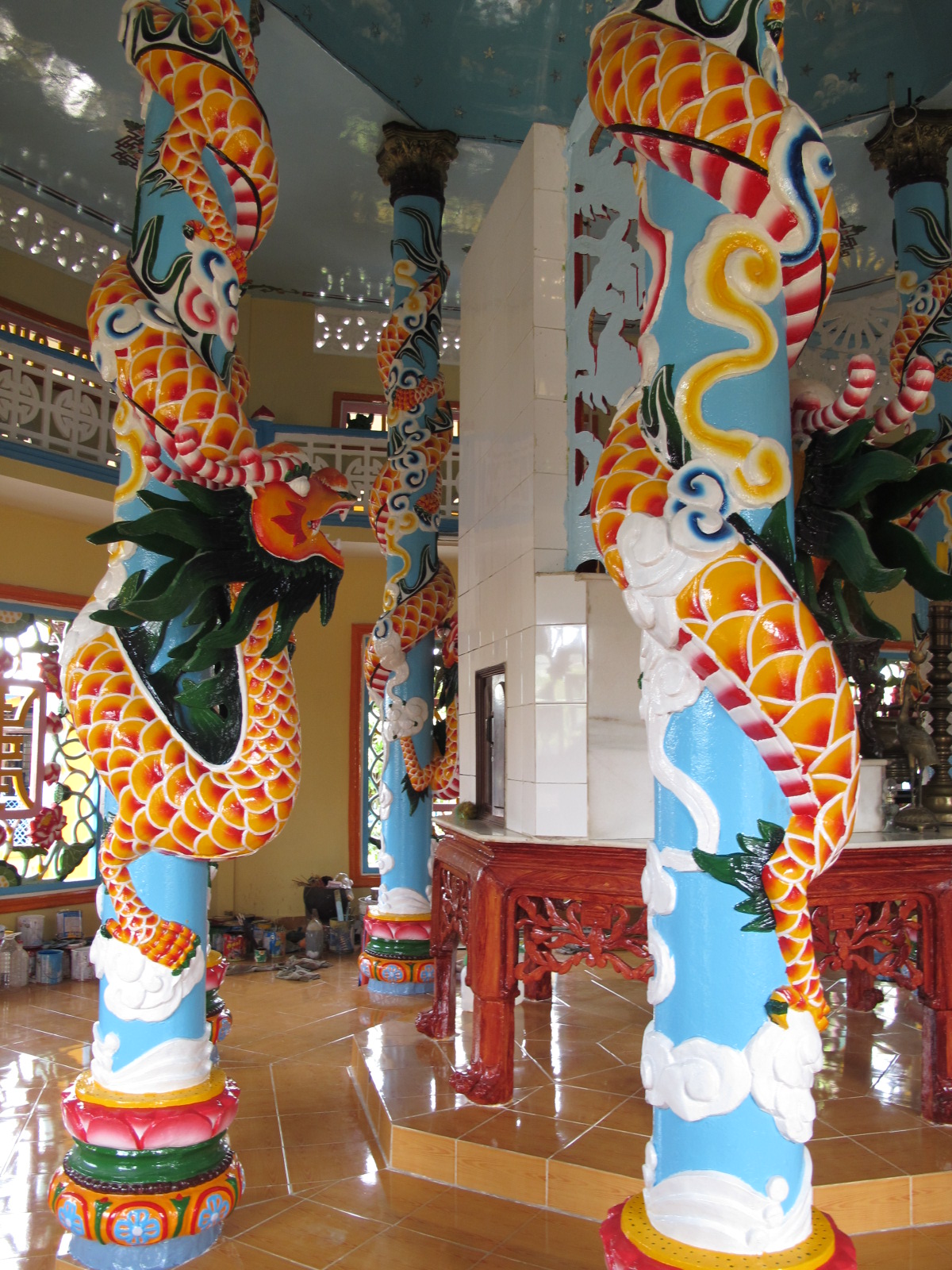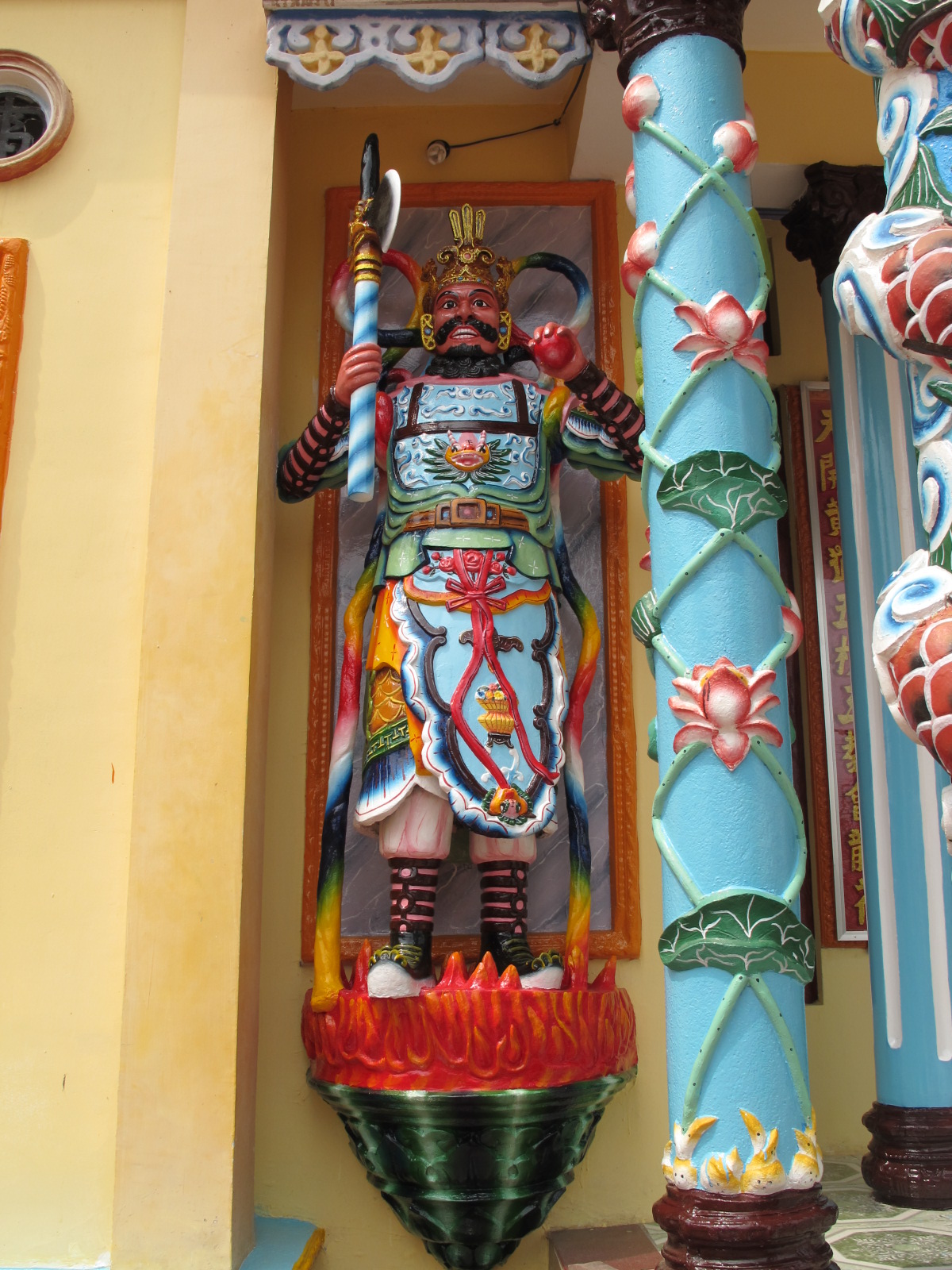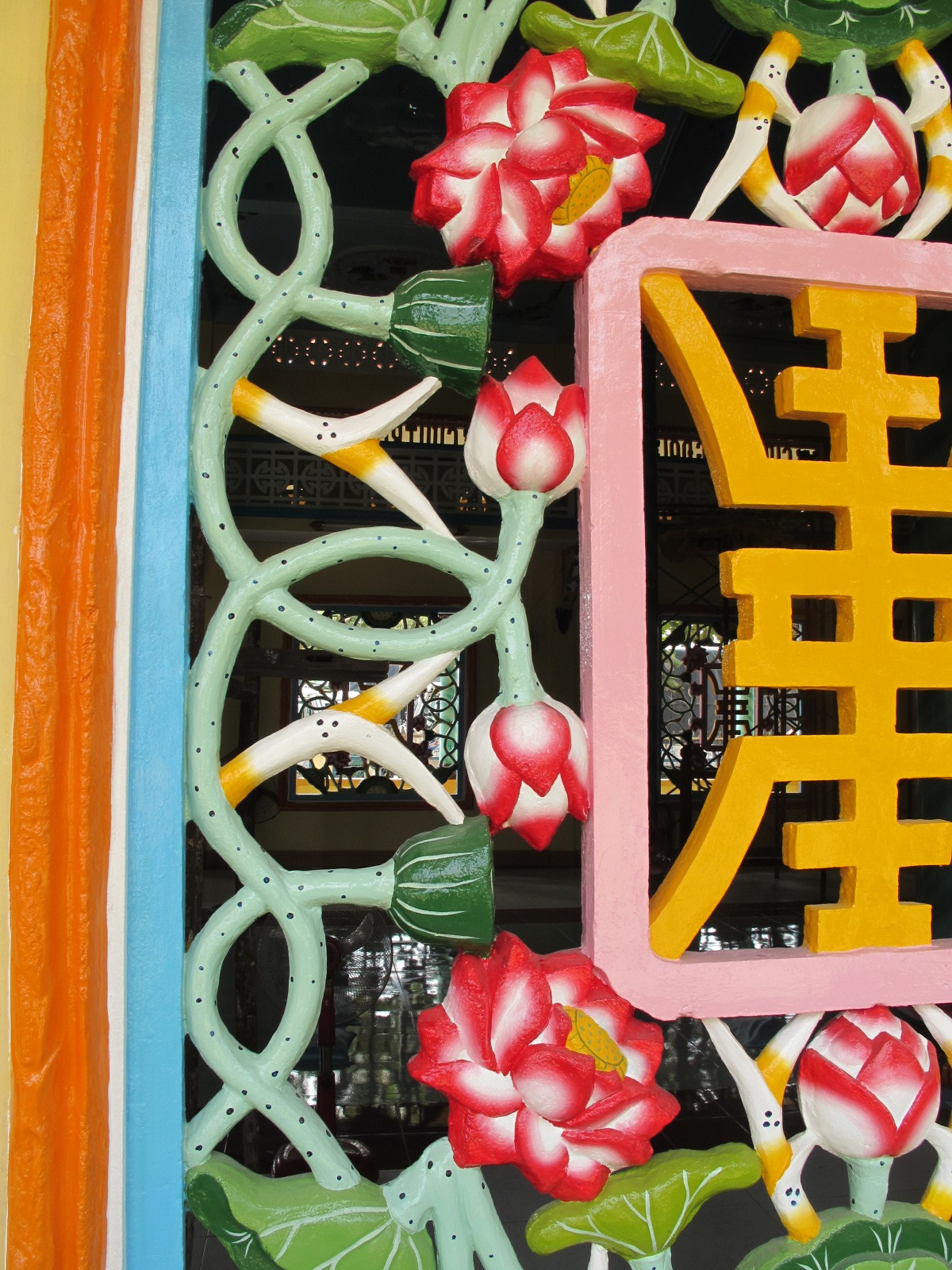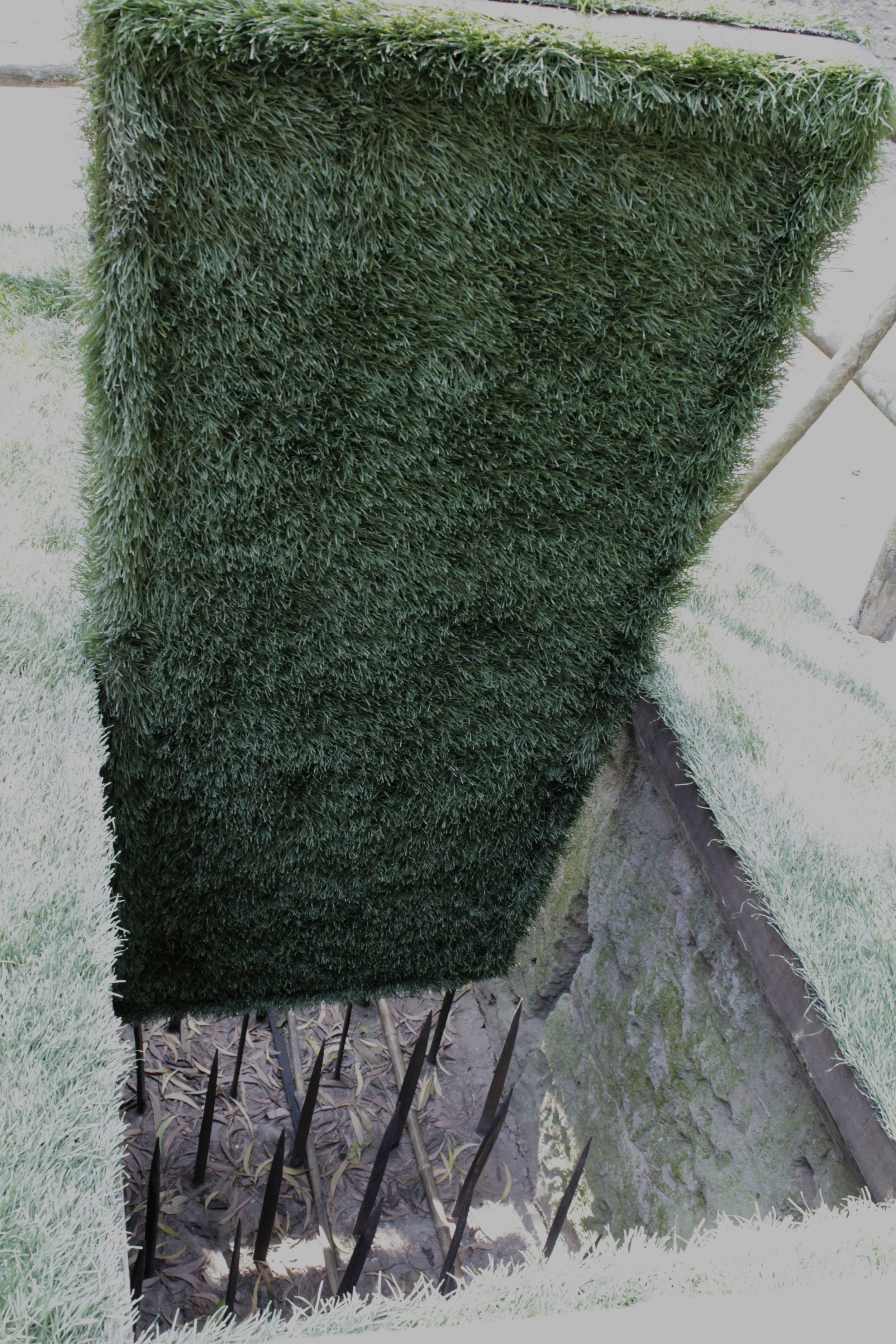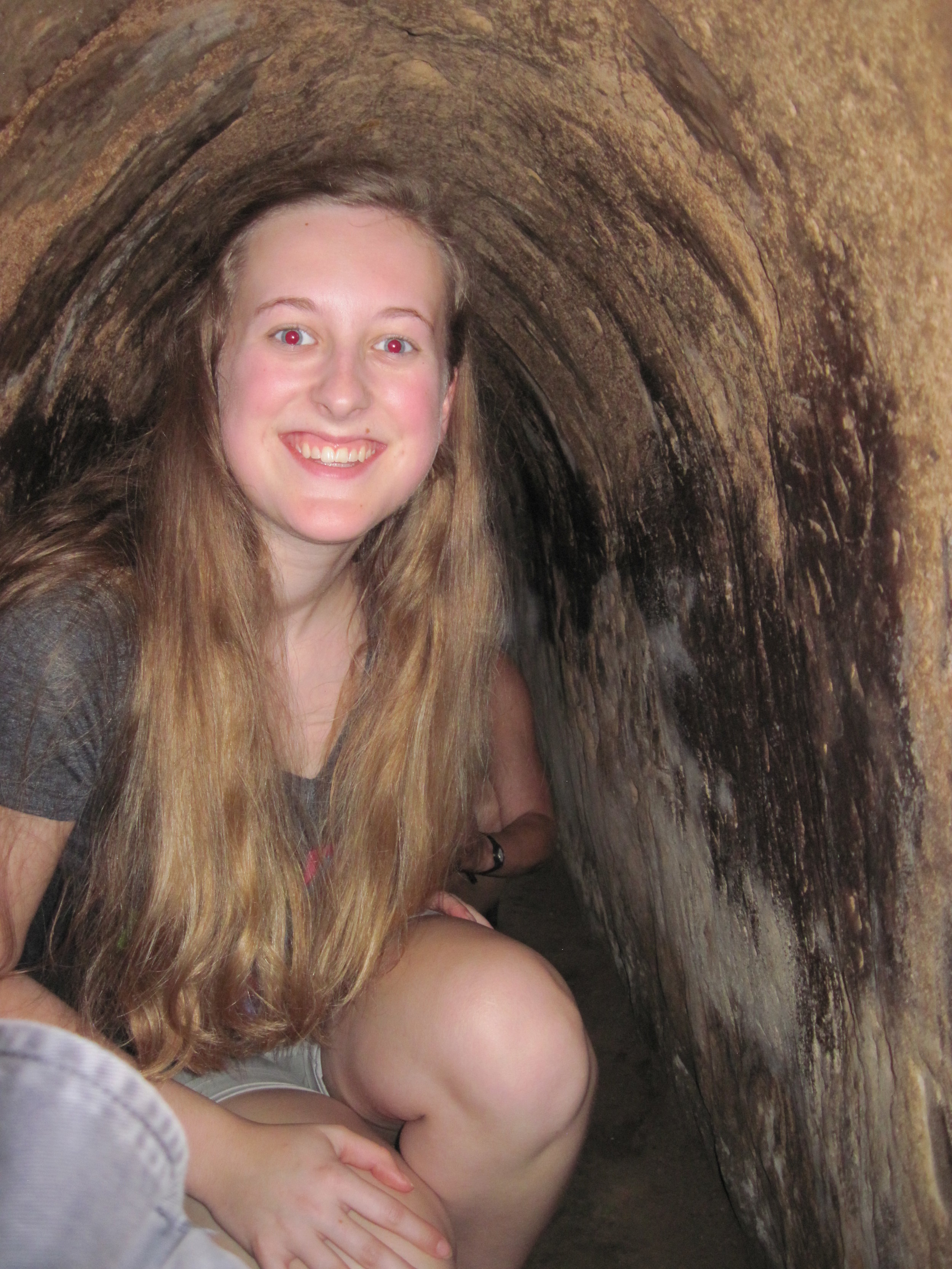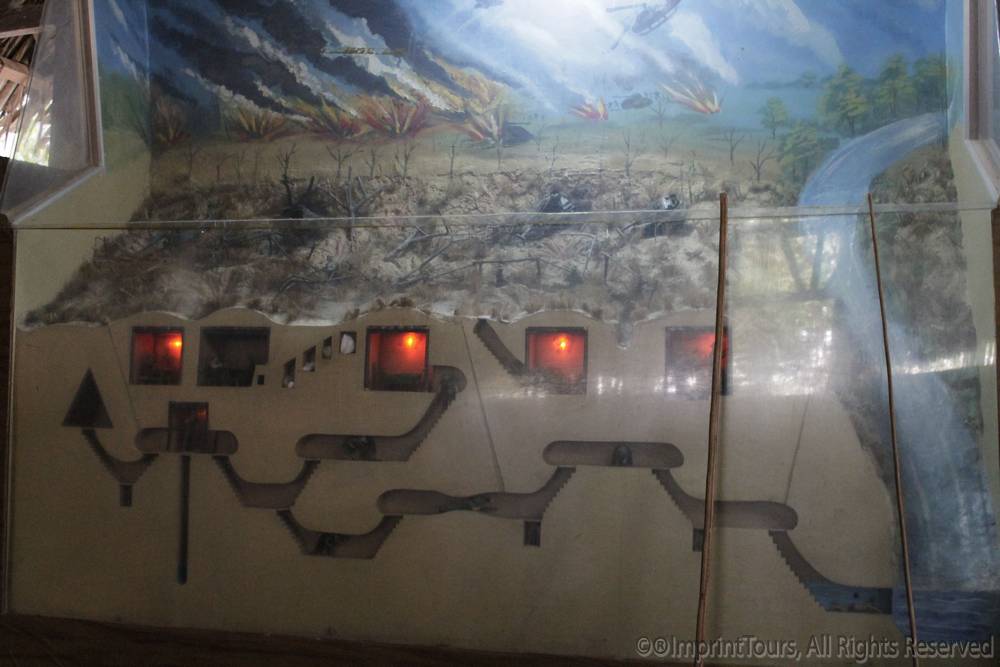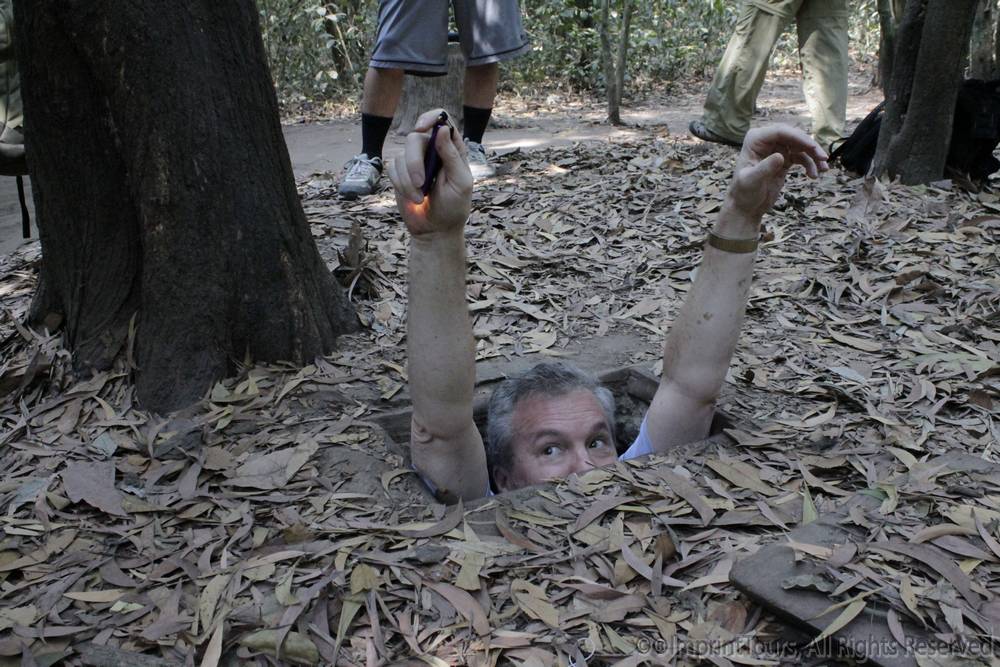At the end of our Vietnam tour we had two of the best experiences of the trip. We had a Homestay visit in the Mekong Delta and visited the wartime Cu Chi tunnels outside of Saigon. Both were interesting and served to connect us to the Vietnamese culture – always a goal on an Imprint tour.
On our homestay visit we had a great local guide named Thu who exposed us to the waterborne culture of the great Mekong Delta region. The mouth of Southeast Asia’s mightiest river is the agricultural heart of Vietnam and a place where traditional culture still holds sway. Our bus dropped us off in the bustling port town of Cai Be. We boarded our own boat and Thu started teaching us about life on the water. We saw whole families living on the junks and plying their trade. We stopped for a visit of a fish sauce factory. Fish sauce is sort of the national “condiment” of Southeast Asia. The fermented, salty sauce is used in virtually every local dish. The process was worthy of note and educational, but I have to admit, not particularly pleasant for the olfactory nerves. Later we visited a craft village that produces coconut candy and, for the adventurous among us, an opportunity to sample snake wine. The Vietnamese make a spirit from the whole body of snakes, preferably venomous ones, in rice wine or grain spirits – with the whole snake still in the bottle. The snake venom is dissolved into the liquor, giving it its medicinal properties. It is widely believed to be an aid to health and virility – yum!
Then it was on into the archipelago of islands in the braided channels of the mighty Mekong. Once having left Cai Be the scenery became lush and impressive, with jungle vegetation growing down to the riverbank. Only the occasional farm showed that human habitation even exists here. After gaining some miles upstream we were transferred to smaller, human-powered sampans. The smaller, shallow draft boats allowed us to explore the smaller channels and inner waterways. This was the best part of the experience in my mind. We were given Chinese coolie hats for sun protection. Our rowers were engaging and happy, though they spoke no English. And we passed many other sampans laden with fruits, other produce, grains, and almost any agricultural products one can imagine.
Eventually we transferred back to our large boat and motored to our accommodation. Our homestay was a large wooden building with a great dinning hall, rustic but comfortable sleeping quarters (raised beds, mosquito nets, and ensuite bathrooms) and, best of all, a lovely veranda around three sides of the building. It was a lovely place for a happy hour and the cold beer was heavenly. Some of the group dozed in the many hammocks available. For dinner, we all had the opportunity to go into the kitchen and help prepare our dinner. It was not a cooking class, but rather more like a cooperative venture. It was a great chance to rub elbows with our local hosts. After dinner we were surprised with a presentation of local music and drama – a private concert just for us.
The next day, before leaving the Delta, we visited the huge, bustling riverside market of Cai Be. We saw explosions of color – every tropical flower and fruit imaginable. All being brought in by barge, sampan, and boat. On the way back to Saigon, we had a bonus stop at the vibrant and colorful Cao Dai temple. Indigenous to Vietnam, Caodaism is a unique fusion of Taoism, Buddhism, Hinduism, Christianity, Islam and Confucianism. The interior is an eruption of multichromatic visual drama. I won’t try to describe it, when a picture is worth . . .
Our other “experience” of southern Vietnam was the Cu Chi Tunnels. If there were ever an ideal symbol of Vietnamese tenacity, resiliency, and resourcefulness, this vast system of tunnels is it. Some of the fiercest fighting of the war took place in this region. The Viet Cong, mere miles from the southern stronghold and capital of Saigon, literally went underground to survive and to maintain control of the area. The system, which is often several layers deep, spread out like a subterranean spider’s web of more than 150 miles of tunnels. The system included hundreds of trap doors and booby traps and consisted of living facilities, storage, weapons storage and manufacturing, hospitals, kitchens, and command centers. The VC used the tunnel system to maintain communications and mount surprise attacks inside US controlled lines. Eventually, the US resorted to saturation bombing which devastated the area. Even so, they were never able to dislodge the combatants. Cu Chi is now a very popular destination for the Vietnamese themselves and a favorite of school groups.
Today a small section is open to the public. The tunnels have been enlarged so visitors don’t get the full claustrophobic effect of life underground – but it is bad enough even so. The visit begins with a propaganda film and then one is escorted by local guides in camouflage fatigues through short sections of the tunnels. There are pictures and examples of booby traps and lots of images of life underground. The best part is the few minutes one is allowed to explore independently. It is a meaningful experience and certainly causes reflection.
Between the rural, traditional experience of the Mekong Delta, the wartime connection at the Cu Chi tunnels , and rounded with the unique religious encounter of the Cao Dai temple we truly felt like we had “Traveled with Intent” in southern Vietnam.


